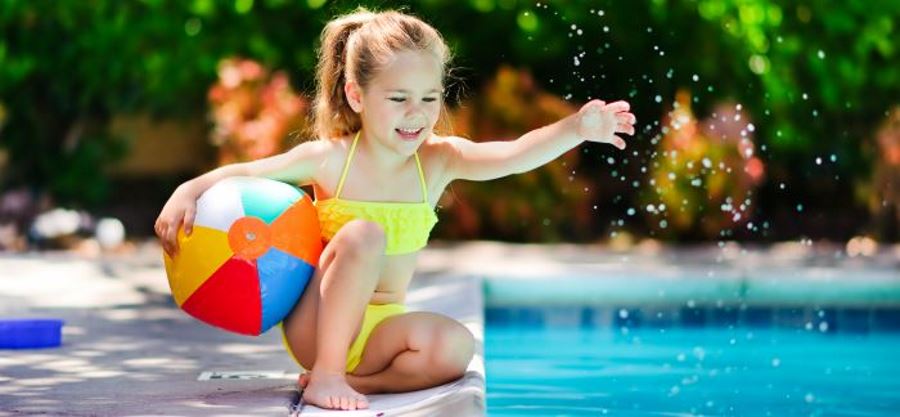
Make this weekend your Home Pool Safety Weekend!
The Royal Life Saving HOME POOL SAFETY CHECKLIST allows pool owners to conduct a self-assessment of their pool and its surrounds to ensure it is safe for everyone to enjoy, and to minimise the risk of young children drowning. Download the checklist below:

(Please note: this checklist does not substitute for a professional pool inspection and has been produced for education purposes only. Pool owners should consider a professional assessment of their pool’s safety compliance.)
Why do so many drowning deaths occur in home swimming pools?
Home swimming pools are located close to the house and a child’s natural curiosity brings them into contact with the pool. In the majority of home swimming pool drowning deaths, the toddler fell in or went in voluntarily.
How do children get into the home swimming pool?
The most common entries for toddlers into the home pool are: via an open gate, through a house door, or by using nearby equipment to climb over the fence. In more than 50% of toddler drowning incidents that occurred in home pools in WA during the last financial year, the children accessed the pool through a gate or door that had been propped open.
Wouldn't I hear a child calling for help when drowning?
No. Many parents mistakenly believe they can listen out for their child, but drowning can occur in a matter of seconds without any splashing or crying out to alert parents. Lack of supervision was a
contributing factor in 100% of fatal toddler drowning incidents in WA during the last financial year.
How can I prevent my child from drowning?
Royal Life Saving believes there are four things you can do to prevent drowning:
- Fence your pool with a four-sided fence, this means that access to the pool is via a gate not the house. It is also preferable that the pool area is only used for swimming and that any equipment not related to the functioning of the pool should be stored outside the pool area.
- Children should be supervised whenever they are in, on or around water, and this supervision should be by an adult and the child should be within arm's reach at all times.
- Undertake water familiarisation classes for you and your child.
- Learn resuscitation
But I have a pool fence, how can my child get into the pool area?
Unsupervised children can access the pool area by using nearby garden and furniture items to provide them with a foothold to climb over the fence. Additionally, in many social situations a pool gate is propped open to provide ease of access. This should never be done.

Royal Life Saving has created the
KEEP WATCH program to reduce the problem of toddler drowning in Australia. Keep Watch promotes four key messages:
- Supervise - Always keep watch of your child around water
- Restrict - Restrict your child's access to water at all times
- Teach - Teach your child to be water confident
- Respond - Learn CPR and call 000 in an emergency.
Toddler drowning prevention involves all of these components.
